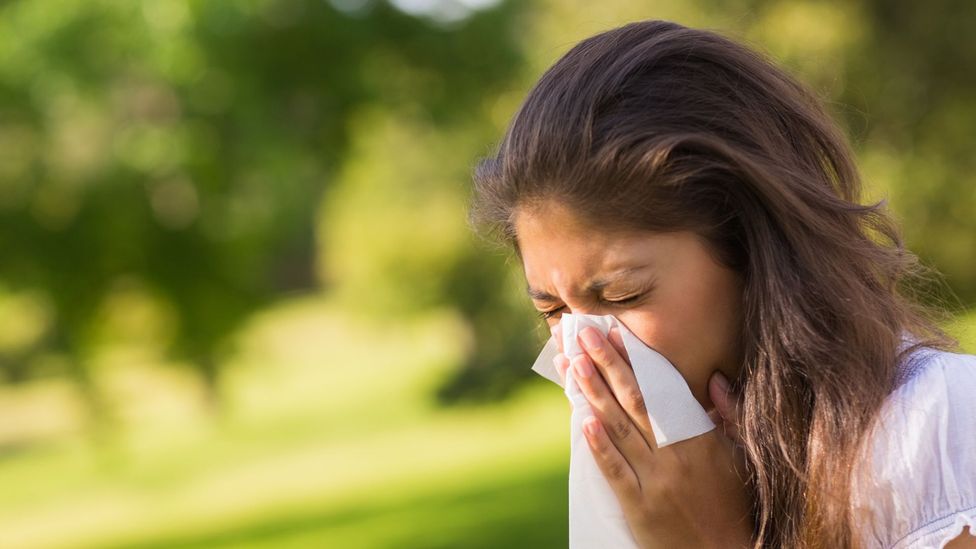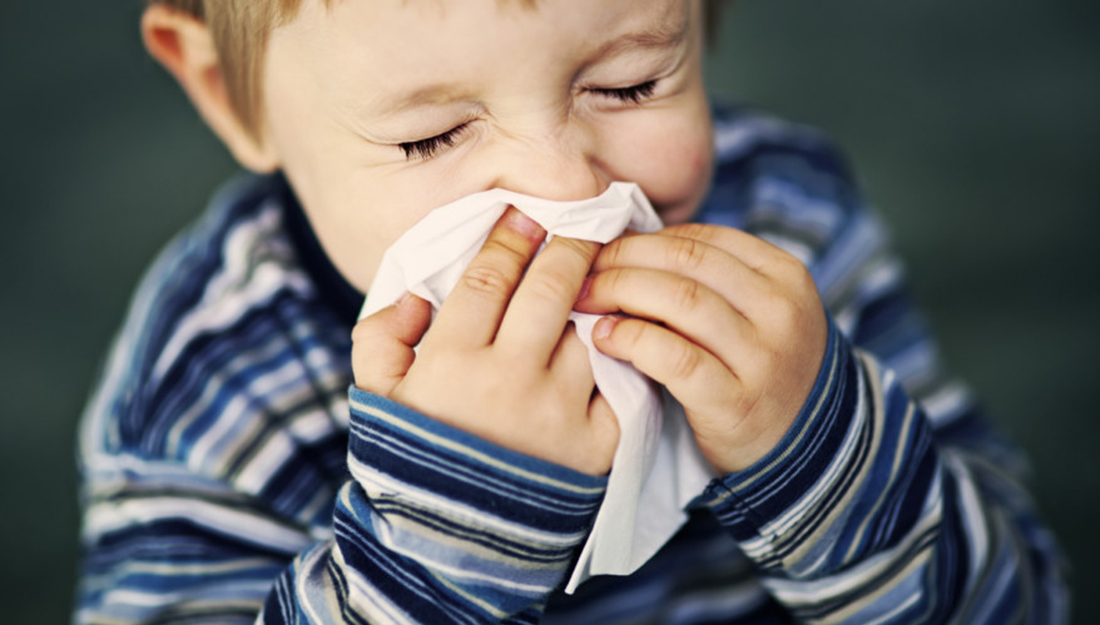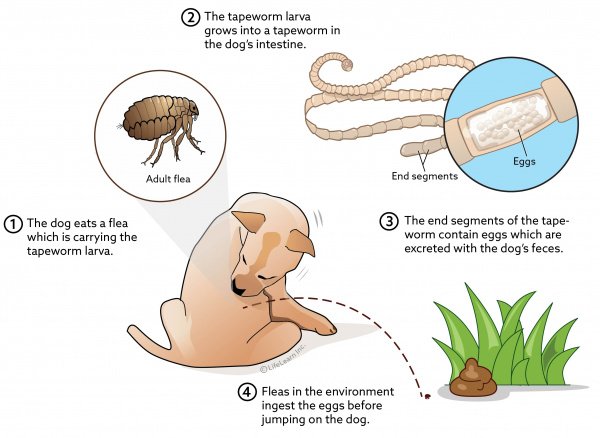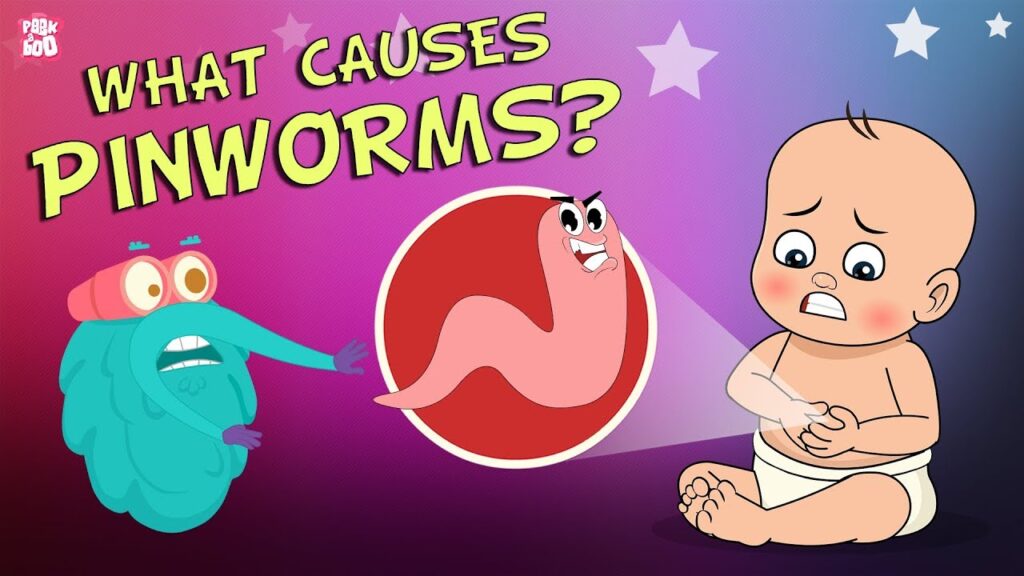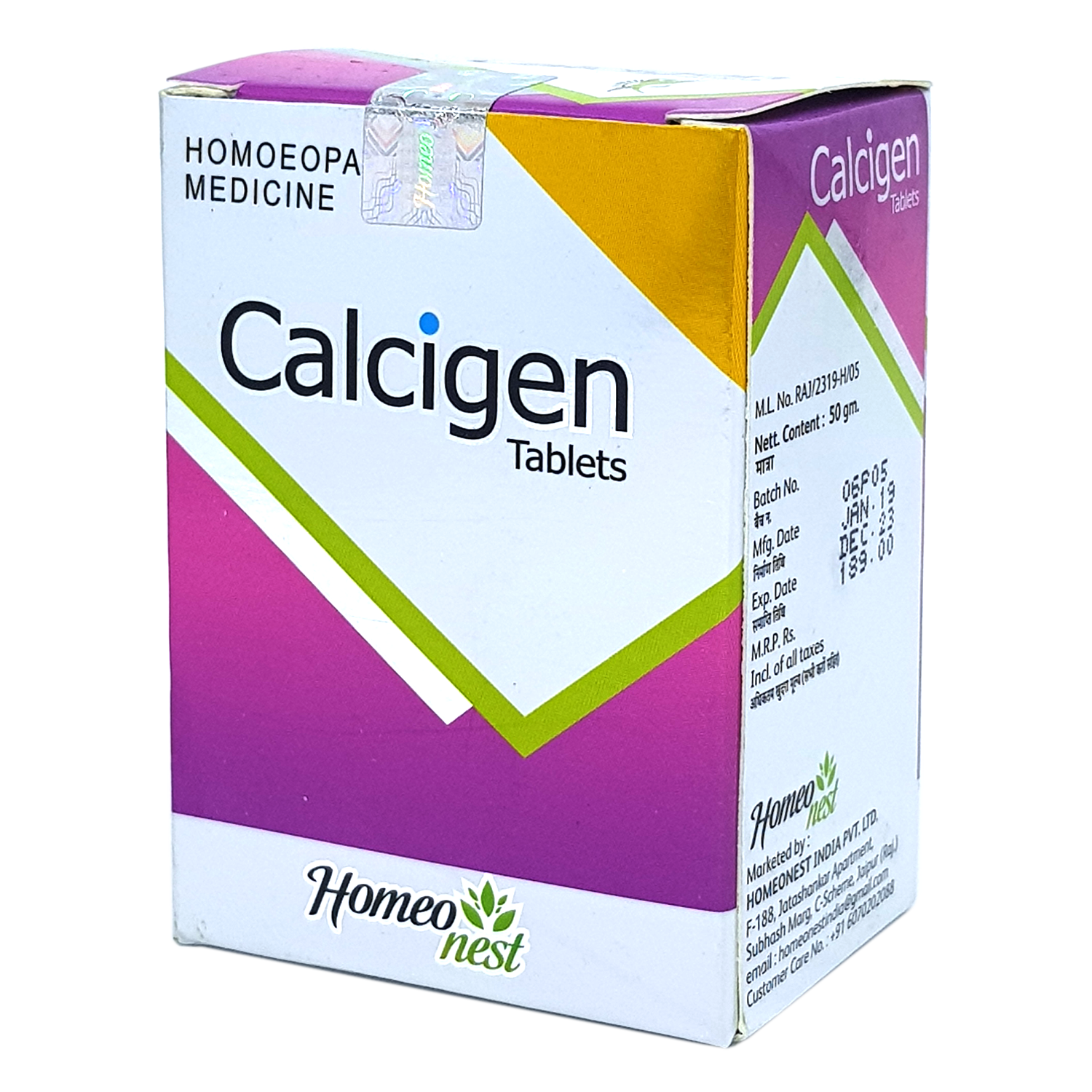HOMEOPATHIC AID FOR RELIEF IN JOINT PAIN

INTRODUCTION
Musculoskeletal disorders account for more than 7315 million outpatients visit per year. Recent surveys by the Centre for disease control and Prevention suggest that 33% (69.9 million) of the US population is affected by arthritis or joint disorders. Many of these are self-limiting conditions requiring minimal evaluation and only symptomatic therapy and reassurance. However, some patient-specific Musculoskeletal symptoms or their persistence may herald more serious conditions that require further evaluation and laboratory testing to establish or document the extent and nature of the pathologic process.

CAUSATIVE FACTORS & CLINICAL PRESENTATION
1) RHEUMATOID ARTHRITIS: RA is a chronic multisystem disease of unknown cause. Although there is a variety of systemic manifestations, the characteristic feature of established RA is persistent inflammatory synovitis, usually involving peripheral joints in a symmetric distribution.
• The potential of synovial inflammation to cause cartilage damage and bone erosions and subsequently changes in joint integrity is the hallmark of the disease.
• In approximately two third of the patients, it begins insidiously with fatigue, anorexia, generalized weakness, and vague musculoskeletal symptoms until the appearance of synovitis becomes apparent.
• Specific symptoms usually appear gradually at several joints, especially those of the wrist, knees & feet that become affected in a symmetric fashion.
• Pain in affected joints aggravated by movement, is the most common manifestation of established RA.
• Morning Stiffness of more than 1 hour duration is an almost invariable feature of Inflammatory arthritis.
• Characteristic changes in hand include Z-deformity, Swan-Neck deformity, Boutonniere deformity, hyperextension of the first interphalangeal joint & flexion of metacarpophalangeal with a consequent loss of thumb mobility.
2) GOUT:- Gout is a metabolic disease most often affecting middle-aged and post-menopausal women.
• It is typically characterized by episodic acute and chronic arthritis, due to deposition of MSU (monosodium urate) crystals in joint and connective tissue tophi and risk for deposition in kidney interstitium and uric acid nephrolithiasis.
• Acute arthritis is the most common and frequent clinical manifestation that can occur in subsequent episodes.
• The metacarpophalangeal joint of the first toe is often involved, but tarsal joints, ankles, and knees are also affected.
• Especially in elderly patients or in advanced disease, finger joints may be involved.
• Inflamed Herbeden’s (Hard nodule in a distal interphalangeal joint) or Bouchard’s nodes (Hard nodule in proximal Interphalangeal joint) may be the first manifestation of gouty arthritis.
• The first episode of acute gouty arthritis frequently begins at night with dramatic joint pain & swelling.
• Joints rapidly become warm, red & tender with a clinical appearance that often mimics cellulitis.
• Early attack tends to subside subsequently in 3-10 days.
• After much acute mono or oligoarticular attack a proportion of gouty patients may present with chronic non-symmetric synovitis. causing potential confusion with rheumatic arthritis.
3) OSTEOARTHRITIS :
• OA is a joint failure, a disease in which all structures of joints have undergone pathologic changes.
• Most common type of arthritis.
• Its high prevalence, especially in the elderly, and the high rate of disability related to disease make it the leading cause of disability in the elderly.
• OA affects certain joints, yet spares others. Commonly affected joints include the cervical and lumbosacral spine, hip, knee, and first metatarsal phalangeal joint.
4) OSTEOPOROSIS:-
• A condition characterized by decreased bone strength, is prevalent among postmenopausal women but also occurs in men and women with underlying conditions or major risk factors associated with bone demineralization.
• Its chief clinical manifestations are vertebral and hip fractures.
5) CALCIUM DEFICIENCY
6) VITAMIN D DEFICIENCY
7) ESTROGEN DEFICIENCY
8) TOBACCO
9) ANKYLOSING SPONDYLITIS
10) SPONDYLOSIS
11) ADHESIVE CAPSULITIS
12) BURSITIS
13) AVASCULAR NECROSIS
14) POTT’S DISEASE
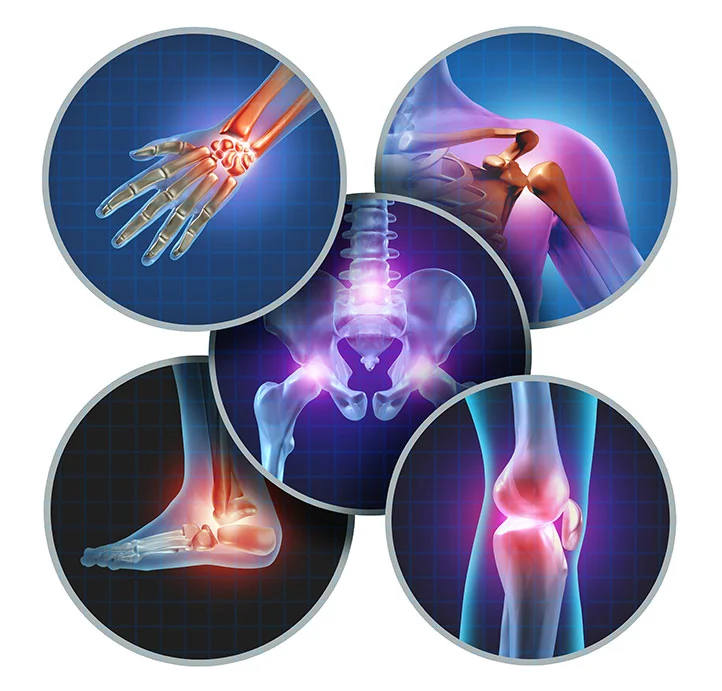
MANAGEMENT
1. Immobility of affected joint
2. Bracing of the affected joint
3. Keep the joint above the level of the heart
4. Compress – Hot or cold compression as per requirement.
5. Gradual movement of the affected joint
6. Weight management – keeping the weight in control helps remove unnecessary pressure from the weight-bearing joints.
7. Avoid caffeine because it is believed that it decreases calcium absorption by interfering with vitamin D absorption
8. Avoid alcohol intake.
9. Medicinal
(I) Glucocorticoid therapy
(ii) NSAIDs
(iii) Intra-articular injection – glucocorticoids and Hyaluronic acid.
(v) Colchicine
Side effects of Glucocorticoids:-
Glucocorticoid therapy has adverse effects like ecchymosis, mild hirsutism, and thinning of hair, which also increases the risk of adverse gastric complaints such as gastritis, gastric ulcer formation & GI bleeding.

COMMONLY USED HOMOEOPATHIC MEDICINES IN CASE OF JOINT PAINS
- BRYONIA ALBA – Knee stiff and painful (arthritis). Hot swelling of feet. Joint red, swollen, hot with stitching, and tearing worse on least motion. Every spot is painful under pressure.
- BELLADONNA – Shooting pains along the limbs, joint swollen red shining with red streaks radiating. Tottering gait. Shifting rheumatism.
- CAUSTICUM – Manifests its action mainly in chronic rheumatism, arthritic and paralytic affection indicated by tearing, drawing pains in muscles with deformities of joints.
- RHUS TOX – Hot painful swelling of joints. Rheumatic pains spread over a large surface at the nape of the neck and extremities. Better by motion & bad effects of getting wet, especially after being overheated.
- PULSATILLA NIGRICANS – Hip joint painful, knees were swollen with tearing drawing pains (Osteoarthritis). Shifting pains. Symptoms always changing.
- BENZOIC ACID – Joints crack on motion, tearing with stitches. Rheumatic gouts and nodes are very painful. Gouty deposits. Bunion of the great toe.
- LEDUM PALUSTRE
- CAULOPHYLLUM THALICTROIDES
- ACTAEA SPICATA
- OSTEO ARTHRITIC NOSODE
- STELLARIA MEDIA
- COLCHICUM
INVESTIGATIONS
- Blood Tests
- CBC
- CPR
- RA Factor
- ESR
- Synovial fluid analysis plain Radiography/ X-ray
- MRI
- Arthroscopy – Procedure for diagnosis
- ANA – Anti Nuclear Antibody
- HLA B-27 Antigen Test.
CONCLUSION
Today 1 in 5 persons is suffering from joint pains. Joint pains occur due to various reasons. Conventional treatment for joint pains provides only temporary relief causing long-term side effects.
In contrast, Homoeopathic medicines produce long-lasting results from treatment without any side effects. They also decrease the chances of recurrence and limit the progression of the disease & even save the patient from surgical interventions such as replacement arthroplasty/joint replacements. Homeopathic treatment aims to treat the underlying cause of the condition considering the patient as a whole.
BIBLIOGRAPHY
- Boericke W. Pocket Manual of Homoeopathic Material Medica & Repertory: Comprising the characteristic and guiding symptoms of all the remedies (clinical & pathology) including Indian drugs.
- B. Jain Publishers
- Homeopathic Drug Picture by M.L. Tyler. B. Jain Publishers
- Harrison’s Principles of Internal Medicines 17th edition. Volume I
- Davidson’s Principles and Practice of Medicine, International Edition, 23rd.
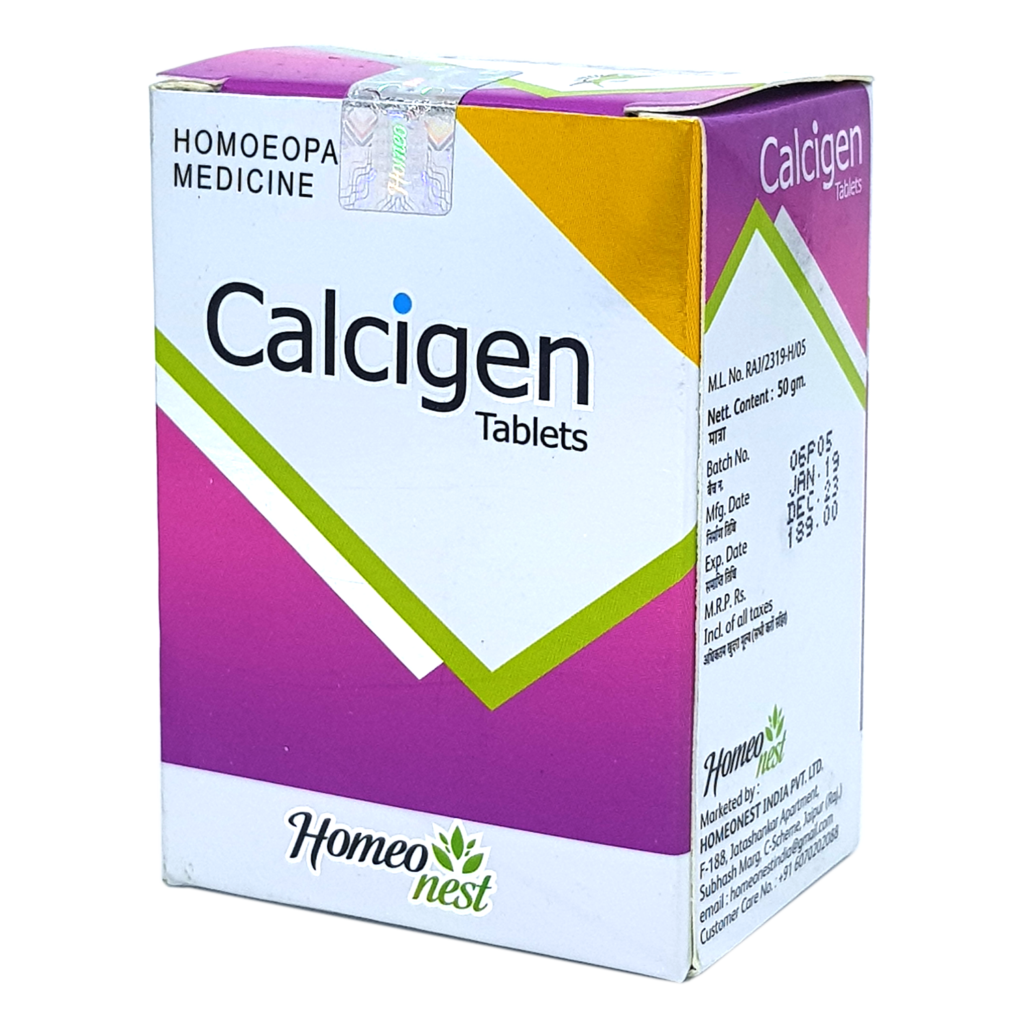
HOMOEOPATHIC MEDICINES PRESCRIBED IN CASES OF JOINT PAIN:-
CALCIGEN TABLET
Dr. Goel’s Homeopathic Calcigen Tablets help in treating joint pain in Human beings. It helps you with joint pain, and muscle pain, and decreases the possibility of Osteoporosis.


